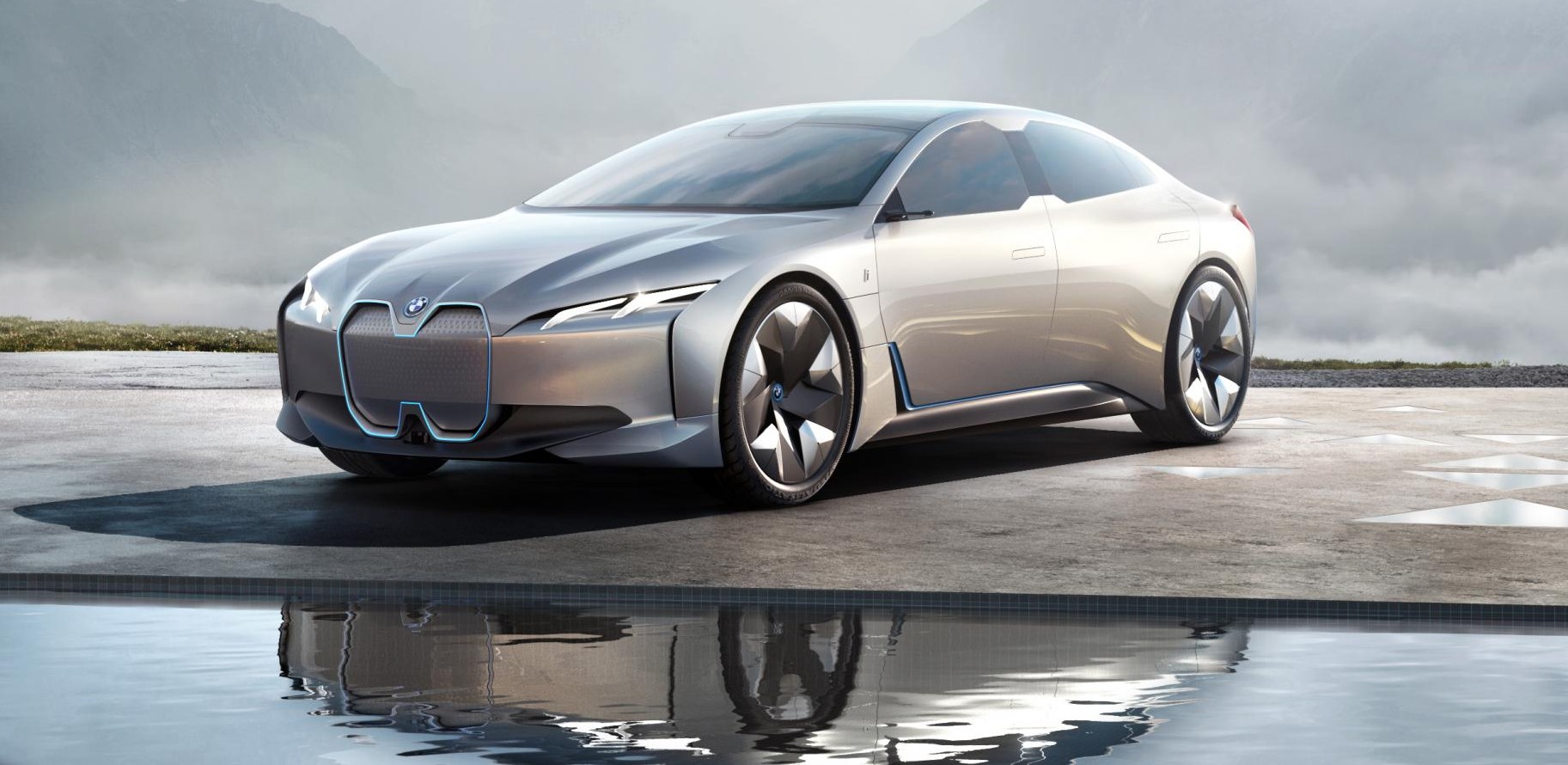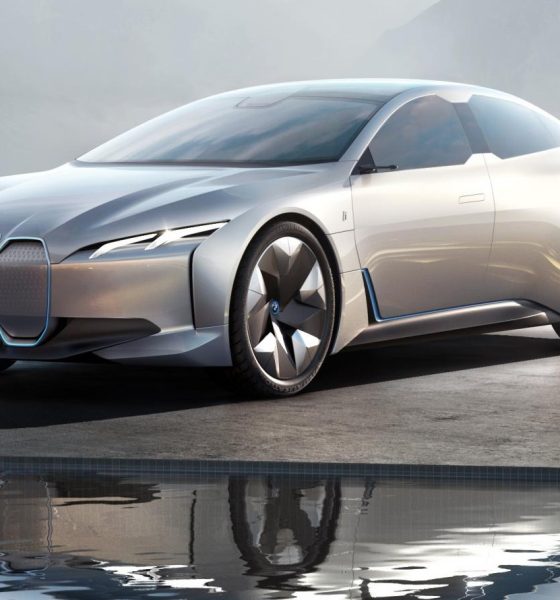

News
BMW’s next CEO could revive an electric car initiative amid assault from EVs like Tesla
BMW CEO Harald Krueger is leaving his post as the German automaker’s chief executive. In an update on Friday, the company announced that Krueger would not be seeking another term in his contract as CEO after it expires next year. A press release from BMW noted that the Supervisory Board will be discussing Krueger’s replacement during a meeting on July 18, though a report from the Frankfurter Allgemeine newspaper, citing people from within the company, claimed that production chief Oliver Zipse is the frontrunner to take over the CEO role.
This would likely translate to a potential revival, or at least an acceleration, of BMW’s push into electric mobility. Krueger has received a fair amount of skepticism over his leadership of BMW over the past years, particularly due to the company losing ground in the luxury segment to its main rival, Daimler’s Mercedes-Benz, according to the Associated Press. BMW has also been left out in the premium electric vehicle market, which is currently being dominated by Silicon Valley-based Tesla and increasingly populated by veteran carmakers like Audi and Jaguar. This was unfortunate, as BMW, at one point, actually had a lead in EVs.

Prior to Krueger’s appointment as CEO, BMW had launched the i3, a curiously-designed battery electric car that was considered as an alternative, or even a competitor, to the Tesla Model S. Under Krueger’s leadership, BMW shifted away from all-electric vehicles, focusing instead on plug-in hybrids, which combine an internal combustion engine and an electric motor. This strategy ultimately resulted in BMW losing the lead that it established with the i3. Today, the company’s next expected EV, the iX3, has been beaten to the market by the Jaguar I-PACE, the Audi-e-tron, and even the Porsche Taycan, which is set for release later this year.
Leading up to Friday’s announcement about Krueger’s departure, BMW insiders have mentioned to German news agency Handelsblatt that the company is considering two candidates who could take over the CEO post: the ambitious Head of Development Klaus Fröhlich and the more tempered Oliver Zipse, who took over BMW’s production department from Krueger back in 2015. Fröhlich is more aggressive than the head of production, but he is also a staunch electric car critic. Back in October, for example, Fröhlich committed to diesel, arguing that ongoing discussions about electromobility are “a little bit irrational.”
Fröhlich’s more recent comments showed an even more dismissive stance on electric cars. In a round table interview in Munich, the BMW executive argued that “there is no customer requests for BEVs.” Doubling down, he added that “If we have a big offer, a big incentive, we could flood Europe and sell a million cars, but Europeans won’t buy these things. Customers in Europe do not buy EVs. We pressed these cars into the market, and they’re not wanted. We can deliver an electrified vehicle to each person, but they will not buy them.”
Zipse, provided that he does get named as CEO, would have a lot of responsibilities on his shoulders. BMW is currently facing headwinds, including a “hiring freeze” and stagnating sales. The company has also issued two profit warnings over the past nine months, suggesting that it will take much effort to turn the automaker around. Rivals Volkswagen and Daimler have already gone ahead with their electric cars such as the ID.3, Audi e-tron, Porsche Taycan, and the Mercedes-Benz EQC. Tesla still holds a notable lead in key metrics such as batteries, efficiency, and charging infrastructure, but with a new captain at the helm, perhaps BMW can start catching up to the Silicon Valley-based electric car maker as well. If there’s anything that Tesla has proven over the years, after all, it is that the demand for well-designed, high-performance electric vehicles is notable, as could be seen in the disruption being caused by the Model 3 in markets such as the United States.

News
Tesla China delivery centers look packed as 2025 comes to a close
Needless to say, it appears that Tesla China seems intent on ending 2025 on a strong note.

Tesla’s delivery centers in China seem to be absolutely packed as the final days of 2025 wind down, with photos on social media showing delivery locations being filled wall-to-wall with vehicles waiting for their new owners.
Needless to say, it appears that Tesla China seems intent on ending 2025 on a strong note.
Full delivery center hints at year-end demand surge
A recent image from a Chinese delivery center posted by industry watcher @Tslachan on X revealed rows upon rows of freshly prepared Model Y and Model 3 units, some of which were adorned with red bows and teddy bears. Some customers also seem to be looking over their vehicles with Tesla delivery staff.
The images hint at a strong year-end push to clear inventory and deliver as many vehicles as possible. Interestingly enough, several Model Y L vehicles could be seen in the photos, hinting at the demand for the extended wheelbase-six seat variant of the best-selling all-electric crossover.
Strong demand in China
Consumer demand for the Model Y and Model 3 in China seems to be quite notable. This could be inferred from the estimated delivery dates for the Model 3 and Model Y, which have been extended to February 2026 for several variants. Apart from this, the Model Y and Model 3 also continue to rank well in China’s premium EV segment.
From January to November alone, the Model Y took China’s number one spot in the RMB 200,000-RMB 300,000 segment for electric vehicles, selling 359,463 units. The Model 3 sedan took third place, selling 172,392. This is quite impressive considering that both the Model Y and Model 3 are still priced at a premium compared to some of their rivals, such as the Xiaomi SU7 and YU7.
With delivery centers in December being quite busy, it does seem like Tesla China will end the year on a strong note once more.
News
Tesla Giga Berlin draws “red line” over IG Metall union’s 35-hour week demands
Factory manager André Thierig has drawn a “red line” against reducing Giga Berlin’s workweek to 35 hours, while highlighting that Tesla has actually increased its workers’ salaries more substantially than other carmakers in the country.

Tesla Giga Berlin has found itself in a new labor dispute in Germany, where union IG Metall is pushing for adoption of a collective agreement to boost wages and implement changes, such as a 35-hour workweek.
In a comment, Giga Berlin manager André Thierig drew a “red line” against reducing Giga Berlin’s workweek to 35 hours, while highlighting that Tesla has actually increased its workers’ salaries more substantially than other carmakers in the country.
Tesla factory manager’s “red line”
Tesla Germany is expected to hold a works council election in 2026, which André Thierig considers very important. As per the Giga Berlin plant manager, Giga Berlin’s plant expansion plans might be put on hold if the election favors the union. He also spoke against some of the changes that IG Metall is seeking to implement in the factory, like a 35-hour week, as noted in an rbb24 report.
“The discussion about a 35-hour week is a red line for me. We will not cross it,” Theirig said.
“(The election) will determine whether we can continue our successful path in the future in an independent, flexible, and unbureaucratic manner. Personally, I cannot imagine that the decision-makers in the USA will continue to push ahead with the factory expansion if the election results favor IG Metall.”
Giga Berlin’s wage increase
IG Metall district manager Jan Otto told the German news agency DPA that without a collective agreement, Tesla’s wages remain significantly below levels at other German car factories. He noted the company excuses this by referencing its lowest pay grade, but added: “The two lowest pay grades are not even used in car factories.”
In response, Tesla noted that it has raised the wages of Gigafactory Berlin’s workers more than their German competitors. Thierig noted that with a collective agreement, Giga Berlin’s workers would have seen a 2% wage increase this year. But thanks to Tesla not being unionized, Gigafactory Berlin workers were able to receive a 4% increase, as noted in a CarUp report.
“There was a wage increase of 2% this year in the current collective agreement. Because we are in a different economic situation than the industry as a whole, we were able to double the wages – by 4%. Since production started, this corresponds to a wage increase of more than 25% in less than four years,” Thierig stated.
News
Tesla is seeing a lot of momentum from young Koreans in their 20s-30s: report
From January to November, young buyers purchased over 21,000 Teslas, putting it far ahead of fellow imported rivals like BMW and Mercedes-Benz.

Tesla has captured the hearts of South Korea’s 20s-30s demographic, emerging as the group’s top-selling imported car brand in 2025. From January to November, young buyers purchased over 21,000 Teslas, putting it far ahead of fellow imported rivals like BMW and Mercedes-Benz.
Industry experts cited by The Economist attributed this “Tesla frenzy” to fandom culture, where buyers prioritize the brand over traditional car attributes, similar to snapping up the latest iPhone.
Model Y dominates among young buyers
Data from the Korea Imported Automobile Association showed that Tesla sold 21,757 vehicles to the 20s-30s demographic through November, compared to BMW’s 13,666 and Mercedes-Benz’s 6,983. The Model Y led the list overwhelmingly, with variants like the standard and Long Range models topping purchases for both young men and women.
Young men bought around 16,000 Teslas, mostly Model Y (over 15,000 units), followed by Model 3. Young women followed a similar pattern, favoring Model Y (3,888 units) and Model 3 (1,083 units). The Cybertruck saw minimal sales in this group.
The Model Y’s appeal lies in its family-friendly SUV design, 400-500 km range, quick acceleration, and spacious cargo, which is ideal for commuting and leisure. The Model 3, on the other hand, serves as an accessible entry point with lower pricing, which is valuable considering the country’s EV subsidies.
The Tesla boom
Experts described Tesla’s popularity as “fandom culture,” where young buyers embrace the brand despite criticisms from skeptics. Professor Lee Ho-geun called Tesla a “typical early adopter brand,” comparing purchases to iPhones.
Professor Kim Pil-soo noted that young people view Tesla more as a gadget than a car, and they are likely drawn by marketing, subsidies, and perceived value. They also tend to overlook news of numerous recalls, which are mostly over-the-air software updates, and controversies tied to the company.
Tesla’s position as Korea’s top import for 2025 seems secured. As noted by the publication, Tesla’s December sales figures have not been reported yet, but market analysts have suggested that Tesla has all but secured the top spot among the country’s imported cars this year.








